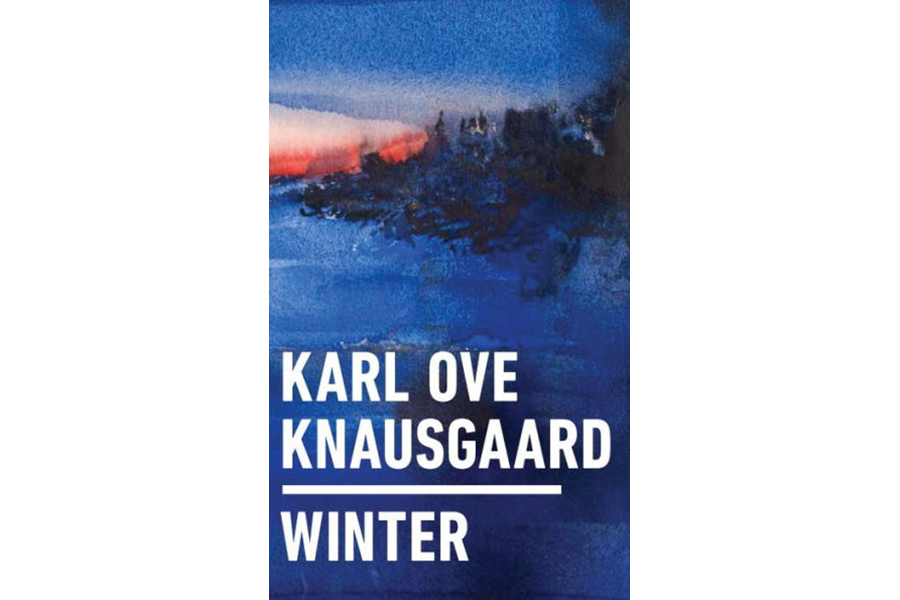'Winter' is Karl Ove Knausgaard's attempt to make you see things anew
Loading...
Even though he’s been winning literary awards – both in his native Norway and in the world at large – ever since his literary debut in 1998, I somehow managed to ignore Karl Ove Knausgaard.
That is, I did so until last August, when I read his essay “Gum.” It really is about chewing gum, and yet I understood in an instant that anyone who could write like that was an author of a different order.
“A little ink on a page,” he writes in “Christmas Presents,” another essay, “wakens a tempest of emotions and causes everything else to vanish....” Now, having gorged myself on almost all of Knausgaard’s published work, I’d have to say that he’s awakened a tempest in me.
Although best known for his six-volume autobiographical series “Min Kamp” (“My Struggle”), Knausgaard is also the author of a couple of other novels and now, more recently, of four essay collections, named after the seasons in which he was composing them in 2013 and 2014. “Autumn” was translated into English last year and Winter becomes available to American readers this month.
In his essays Knausgaard confronts common household objects and the most basic natural phenomena: “Over the years I must have had something like thirty pairs of winter boots, and I must have worn them every day during the entire winter, sometimes for two winters, and yet I can barely remember a single pair. This is precisely because they were used so often and with such familiarity: everyday life makes things disappear, the everyday is like a zone where whatever lands within is doomed to oblivion.”
Knausgaard’s aim is to re-see the everyday. And he does this in his idiosyncratic way, determinedly following the path of his darting thoughts, the way a hunter (better, a videographer, because he wants it alive) might track a rabbit: “I saw an owl once, it was in a wildlife park, and though I wasn’t shocked when it suddenly blinked, it was still unsettling. I had never thought of the fact that birds never blink. When this owl, it was an eagle owl, as large as an infant, suddenly blinked, it veered from the bird-like to the human.”
Knausgaard wonders about many things in these essays, right down to trying to imagine the processes by which a fish or even a cell connects to its world.
Knausgaard wrote these essays, he said in an interview, “for fun.” And they are fun ... and stunning and glorious. But Knausgaard is not funny. He’s perhaps wry. He is your intensely earnest friend who erupts with a disconcerting eloquence and whose flow can’t be stopped.
And there is no one more interesting when discussing what it is to be a father of young children. Starting before her birth and then continuing after, Knausgaard wrote daily explanatory essays to his fourth child and third daughter.
Interspersed among the 60 essays, he addresses her directly in monthly letters: “I have picked up a pram and a cot from a friend’s place ... and I’ve bought a mobile with little planes flying around a sun, it’s going to hang above the changing table in the bathroom. Sometimes I think that the only thing missing is you, almost as if we were going to pick you up at the hospital....”
These essays will not intimidate anybody by their length; most are two to four pages. (“Winter” is about 10 percent longer than the equally dazzling “Autumn,” also translated, with a slight British accent, by Norwegian writer Ingvild Burkey.)
Yet even in the small space of these works, Knausgaard is able to ask intelligent “naive” questions in the midst of discoveries, observations, and contemplations. It’s not agreeing or disagreeing with his opinions or being intimately connected to his experiences that is so gripping; it’s the seemingly endless stirring of his thoughts about the wide world out there that helps to stir ours.
“The experience of art ... can lift one up and seem light,” he writes, “but without leaving what it is bound to – as when a branch is lifted by the wind, when all its leaves tremble and flicker and are filled with glinting reflections of sunlight.”
Maybe it’s impossible for an artist to describe the effect of his own work on others. But when Knausgaard writes in “Autumn” about reading the works of Flaubert, he somehow manages to capture exactly what I experience when reading Knausgaard himself:
“Flaubert’s sentences are like a rag rubbed across a windowpane encrusted with smoke and dirt which you have long since grown accustomed to seeing the world through. The feeling you get then, when for the first time in a long while the world shines brightly again.”
Bob Blaisdell writes essays about teaching and reviews books on education and Russian literature.








